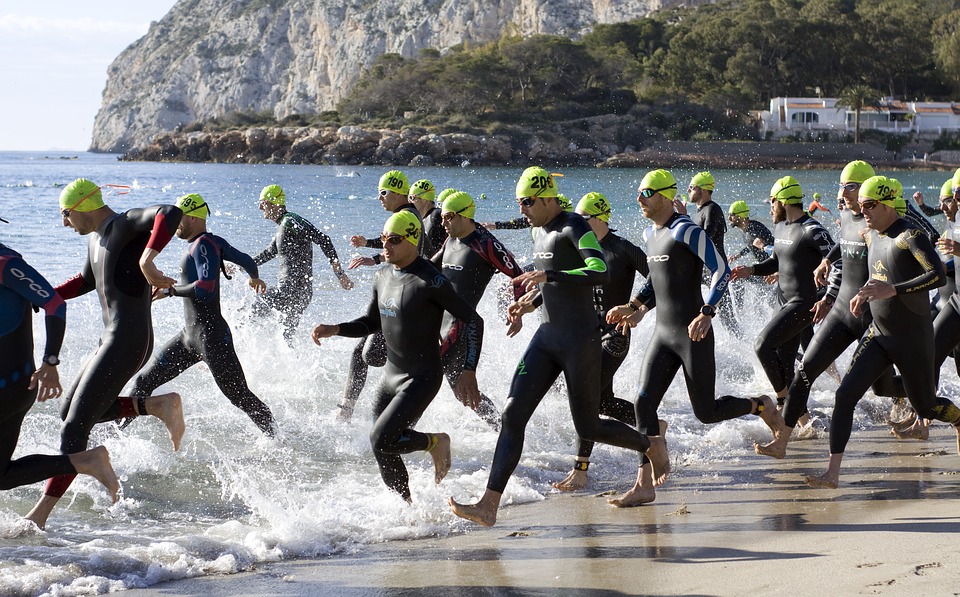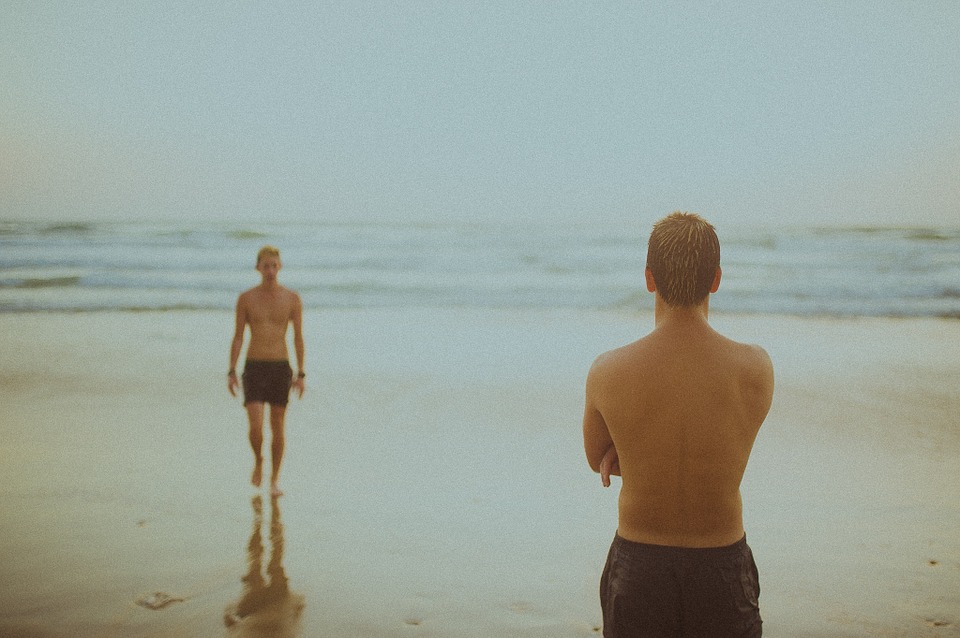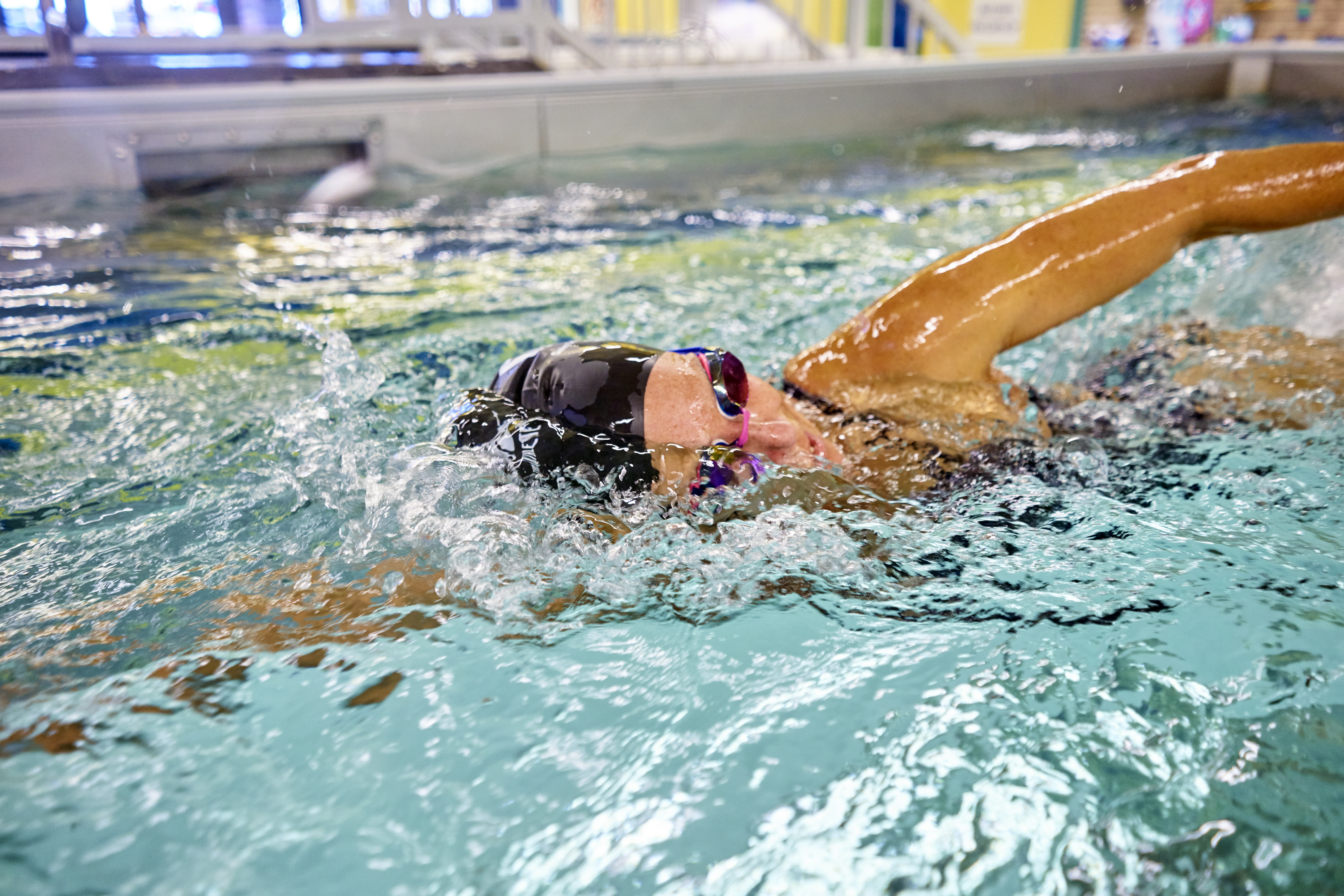Swim Across America, Denver
Swimlabs & Children's Hospital of Colorado Team Up to Raise Money for Pediatric Cancer Research SwimLabs Highlands Ranch is proud to be a sponsor of...

Freestyle—it’s the foundation of swimming and usually serves as the base of most of our training. It can sometimes seem easy to learn because we practice it so much. But what if we are doing it wrong or taking it for granted because it’s so “easy”? Is there a perfect freestyle we should all be reaching for? We sat down with SwimLabs’ Olympian instructor Kara Lynn Joyce and Biomechanics expert Trever Gray to figure out what the optimal freestyle is and how we can achieve it.
First of all, it’s important to realize that one perfect stroke technique doesn’t exist. There’s no such thing as a perfect freestyle. Gray says, “We’ve been asking what the limits are of humans in water. Have we reached the maximum speed in the 100 Free? The answer is...no we haven’t. There’s quite a few technique discrepancies even in elite swimmers.” A lot of factors come into play like limb length, torso length, body weight and body fat percentage. “All of these measurements differentiate the different types of freestyle,” says Gray. The only answer is to do everything possible to strive toward perfection.
Your best possible freestyle will be unique to...well, you. Joyce, a world class freestyler explains, “I don’t think there’s a one size fits all freestyle. It’s your range of motion and your body.” What works for one person isn’t necessarily going to be right for another. Like everything in sports, there’s going to be some trial and error.
Here’s 4 key technique components to experiment with:
Try an open arm recovery. This works well for both speed and injury prevention. “It leads to a more connected stroke where you can draw a lot of power from it. Nathan Adrian’s stroke in general is like that. The last ten meters of his race he gets that connected power driven stroke,” says Joyce. The open arm recovery is also something to consider with shoulder mobility. A lot of Joyce’s swimmers at SwimLabs have come in with shoulder pain, so the first thing she does is look at their above water recovery. “If they have a high elbow recovery outside of the water, that could be a big thing that leads to shoulder pain. People that I’ve had that have transitioned from a high elbow recovery to more of an open lower recovery have experienced less pain or no pain.”
Work on a High Elbow Catch. Joyce says, “I think the most important thing is obviously what goes on underwater. Across the board, all elite swimmers have a really nice high elbow catch.” Even though everyone has a high elbow catch, there is still room for individualization. “Distance swimmers, maybe the catch is a little bit wider, sprinters a little more narrow, but for the most part everyone has the same kind of high elbow catch underwater.” Gray adds that “The sooner you can get into that early vertical forearm, so that the maximum amount of area of the arm is pulling backward, the faster you will be.” A higher elbow catch equals more propulsion forward.
Engage Your Lats. If your stroke is too wide, your stroke will be much weaker. Joyce says, “If you pull a little bit deeper while still maintaining a high elbow catch, you’re going to be able to engage those bigger stronger muscles and have a stronger and faster pull.”
Finish Your Stroke. Joyce explains, “It’s important to swim a full, complete stroke.” That means that you should finish your stroke all the way through, past your hips. Gray adds,“The acceleration part is the big component at producing more force in the water. You have to accelerate through the stroke in order to maximize propulsion.”
Here are the top 4 ways to practice your technique:
Use Video Feedback. Joyce says, “I’m spoiled with the platform I teach on with SwimLabs.” They have video review from multiple angles and immediate feedback. She adds, “I’ll critique their catch underwater. I’ll have a clear camera view. You can look at different angles and give immediate feedback.”
Watch the Pros. Elite freestyles don’t have the same exact stroke, but they have all found what works for them. Joyce says, “At SwimLabs, we have an extensive library of great swimmers and their strokes that we can put up next to swimmers, so we can compare. We can look at a wide range of freestyles and say ‘why don’t we try a couple of these and see what feels best?’”
Tweak Your Stroke. Don’t overly obsess over drills. A lot of times it can be beneficial to just try tweaking your regular stroke. Joyce explains, “I’m really not that big on drills. I prefer making the change in your stroke. I think a lot of times people will get drills as their homework and focus so much on doing the drill right that they don’t actually see how it applies to changing their stroke.”
Practice Streamlining. Dive in the water in a streamline and see how far you can go. Gray explains, “The best swimmers in the world can do a start and go all the way to the other end in a streamline without kicking or pulling.” The farther you can glide underwater, the better your body alignment is. To make improvements, Gray recommends “Starting with the head and working your way down. Work with your coach and find was segments need to adjusted.”
If you're looking to become a better swimmer (which everyone is), the quest for your own perfect freestyle is a logical place to start. Joyce says “The foundations of freestyle apply to all of the other strokes. You can tell a lot about what kind of swimmer they are based on how they swim in freestyle.” It’s also the fastest stroke and a large percentage of a lot of our practices.
We challenge you to relentlessly seek the elusive perfect freestyle!
Let us know how it goes!
Bio:
Trever Gray is a high performance consultant on human physiology, biomechanics and nutrition. He was a former world class 200 backstroker as well as an elite level coach. Trever holds numerous masters swimming records and lives in Washington State. If you have more questions, you can reach Trever at trevergray@gmail.com
Photo Credit: Aaron Okayama // Jolyn Clothing Co

Swimlabs & Children's Hospital of Colorado Team Up to Raise Money for Pediatric Cancer Research SwimLabs Highlands Ranch is proud to be a sponsor of...

The Five Best Exercises to do Before Training Most of us swimmers know that when it comes to practice, if you’re not early, you’re late. Arriving...

The team from Good Day Sacramento stopped by SwimLabs in El Dorado Hills this morning. Check out their videos here!

Visit our Water Safety Blog for expert advice, family tips, and more!